Natural History
Practice in Paradise is pleased to present its debut exhibition, Natural History, featuring new work by Christopher Thomas Campbell, at Stoneleaf Retreat during the 2021 edition of Upstate Art Weekend.
Natural History will be on view at Stoneleaf Retreat during Upstate Art Weekend, August 27 - 29, 2021. If you would like to attend, please RSVP here.
Much of Campbell’s work utilizes industrial materials to confront contemporary ideas of what is considered natural and all of the reverence “natural” objects tend to hold. In Natural History, paintings and sculptures rendered in poly-foam and shown in a manner referencing Japanese tea room displays mimic depictions of nature and natural elements, confusing the viewer’s tactile perception and ideas of what objects are meant to be admired and what is simply waste.
Natural History is comprised of three paintings, each displayed in its own encasement and paired with a sculptural object resembling a Japanese suizeki stone. In a nod to the trail markers found on hikes throughout the Catskills, each painting features a geometric form rendered in a primary color. These works' formal similarities to minimalist paintings are disrupted by the fact that they are painted on what appear to be tree bark, here rendered in cast foam. Tension is created between the geometric forms and their inscription on the tree bark, its edges raw and uneven as if just peeled from a trunk. The similarity between the physicality of paint as it pulls away from the foam and that of lichen that grow naturally on trees further blurs the lines between the perceived object and material.
Blaze Painting / Great White's Delight, 2021. Acrylic paint and polyurethane foam on Rives BFK, 34 x 34 inches.
Consistent throughout Natural History is the use or representation of foam, an inorganic material that is generally considered to be environmentally hazardous. The found foam pieces that comprise the sculptures broke off of buoys in the ocean and weathered the surf over a period of months, possibly years. By the time they washed up on shore, they were battered and dotted with barnacles, more closely resembling stone than their intended form. Can those pieces of foam, if placed on carved wood pedestals, become sacred rocks resembling those used in the Japanese suiseki tradition? Their appearance here would indicate yes, bearing the question, is there any difference in the joy derived from worshiping a natural object and that of worshiping the unnatural, if visually indiscernible? Adorning the top of each sculpture, an additional narrative component complicates the read. The pitons, reminiscent of rock climbing folklore, set up a necessary and metaphorical bifurcation, one of dystopian sports practice ephemera.
Chossy Flotsam / Keisho-ishi, 2020. Found polystyrene, black walnut, 22.25 x 10.5 x 9 inches.
There is a resounding effort to depict our relationship to industrial materials such as foam as destructive or toxic. In this work, Campbell emphasizes our evolving relationship to what we call “natural” or “beautiful” and all the paradoxes imbedded in that: objects to revere and their inherent value, our assumption about materials longevity and robustness, suspension of a process and our desire to halt time, emerging obsessions with the “natural”, the landscape and how we strive to shape or enshrine the unshapable.
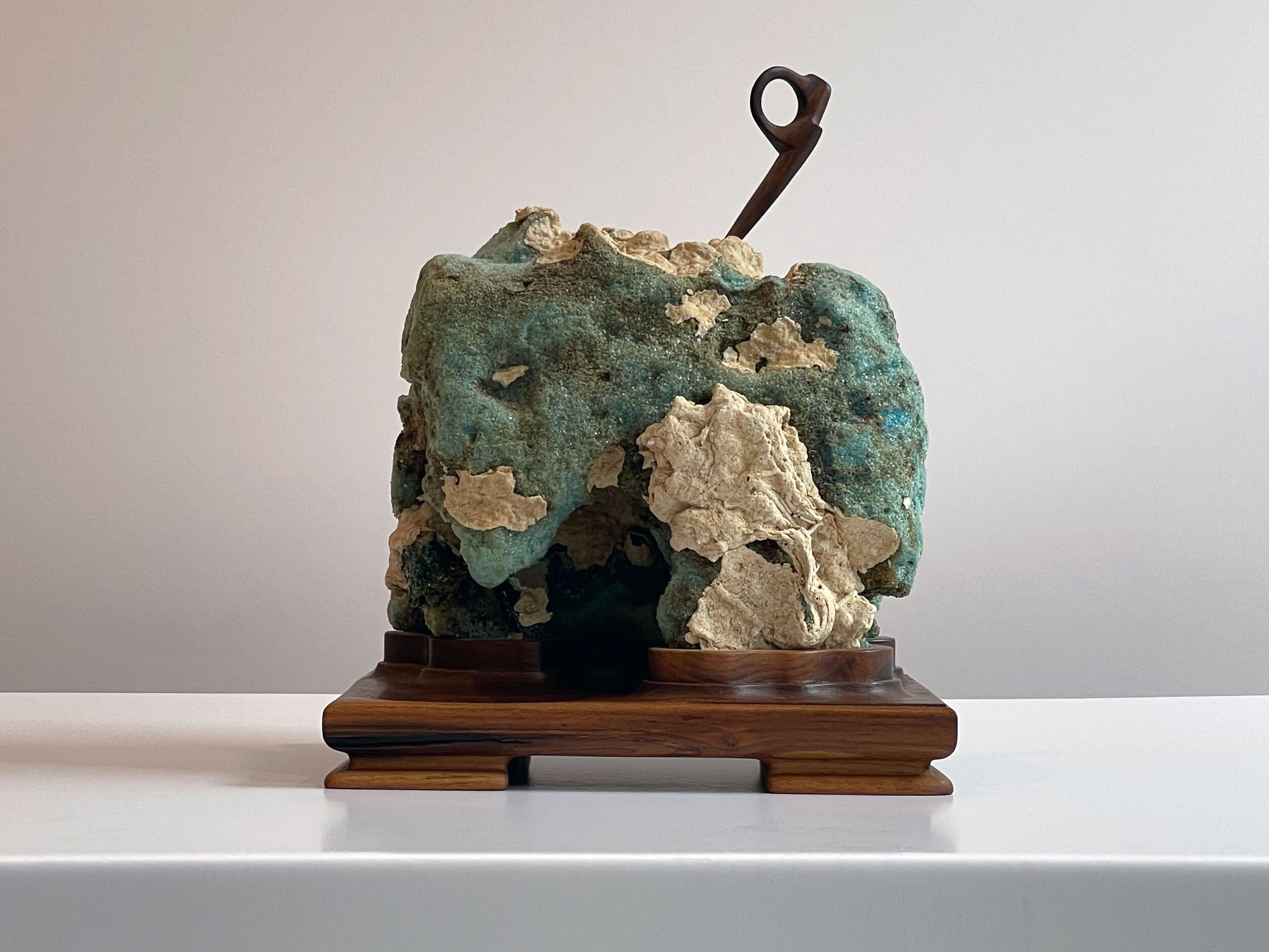
Chossy Flotsam / Dōkutsu-ishi, 2020, Found polystyrene, black walnut, 13 x 10.5 x 8.5 inches
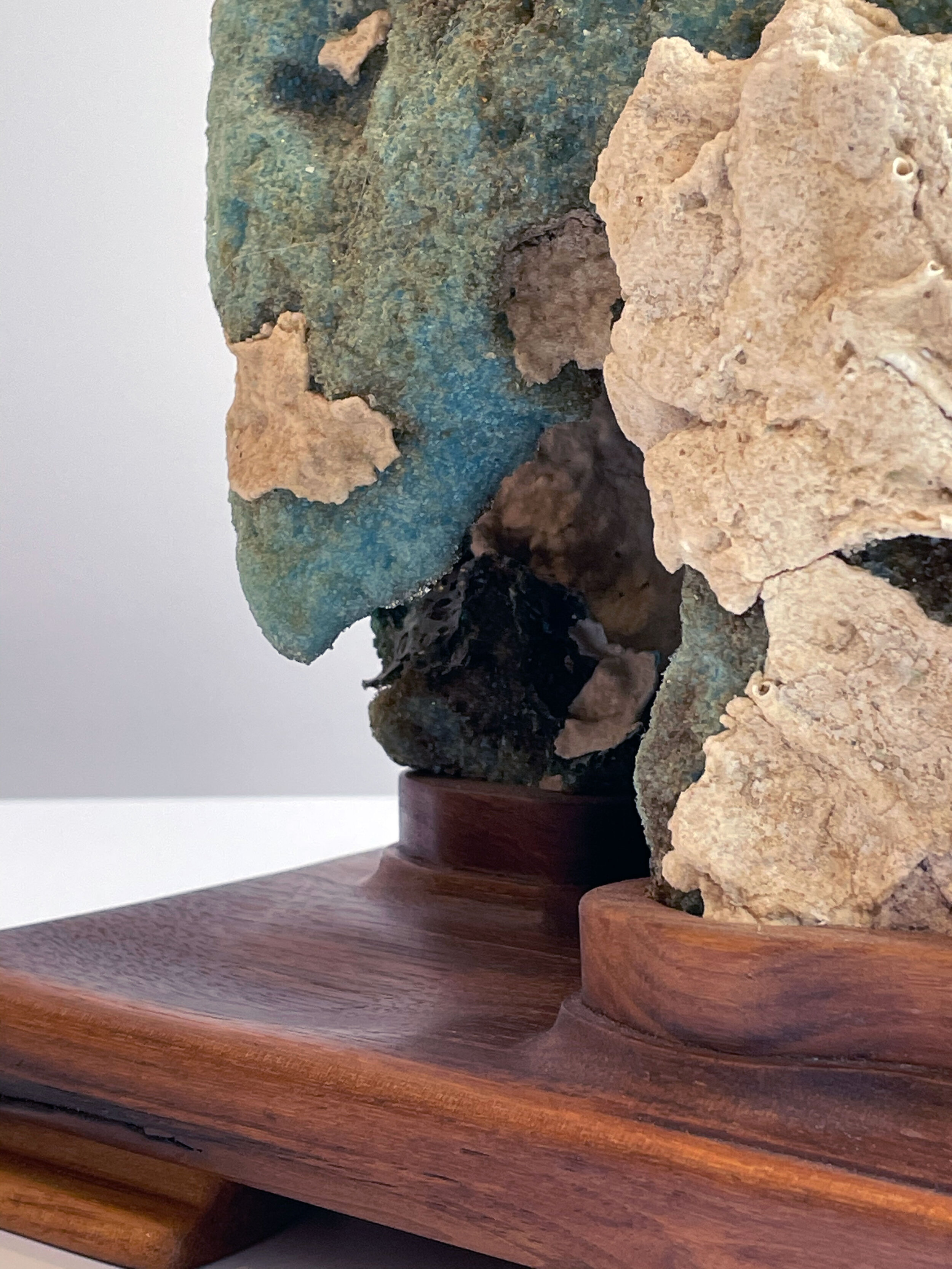
Chossy Flotsam / Dōkutsu-ishi (detail)

Chossy Flotsam / Ao-ishi (detail)

Chossy Flotsam / Ao-ishi, 2020. Found polystyrene, black walnut, 10.75 x 17.5 x 11 inches.
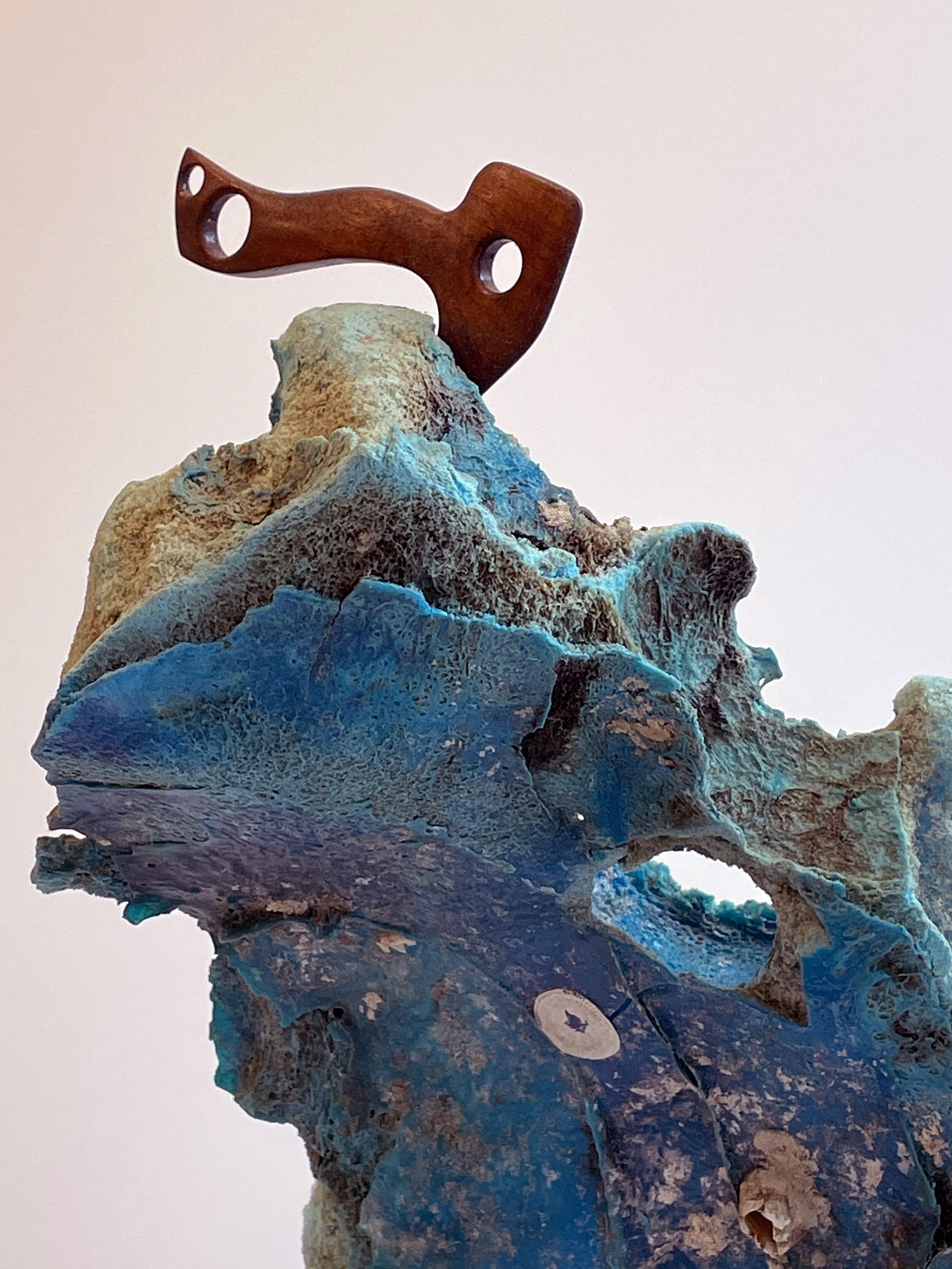
Chossy Flotsam / Keisho-ishi (detail)

Chossy Flotsam / Keisho-ishi, 2020. Found polystyrene, black walnut, 22.25 x 10.5 x 9 inches.
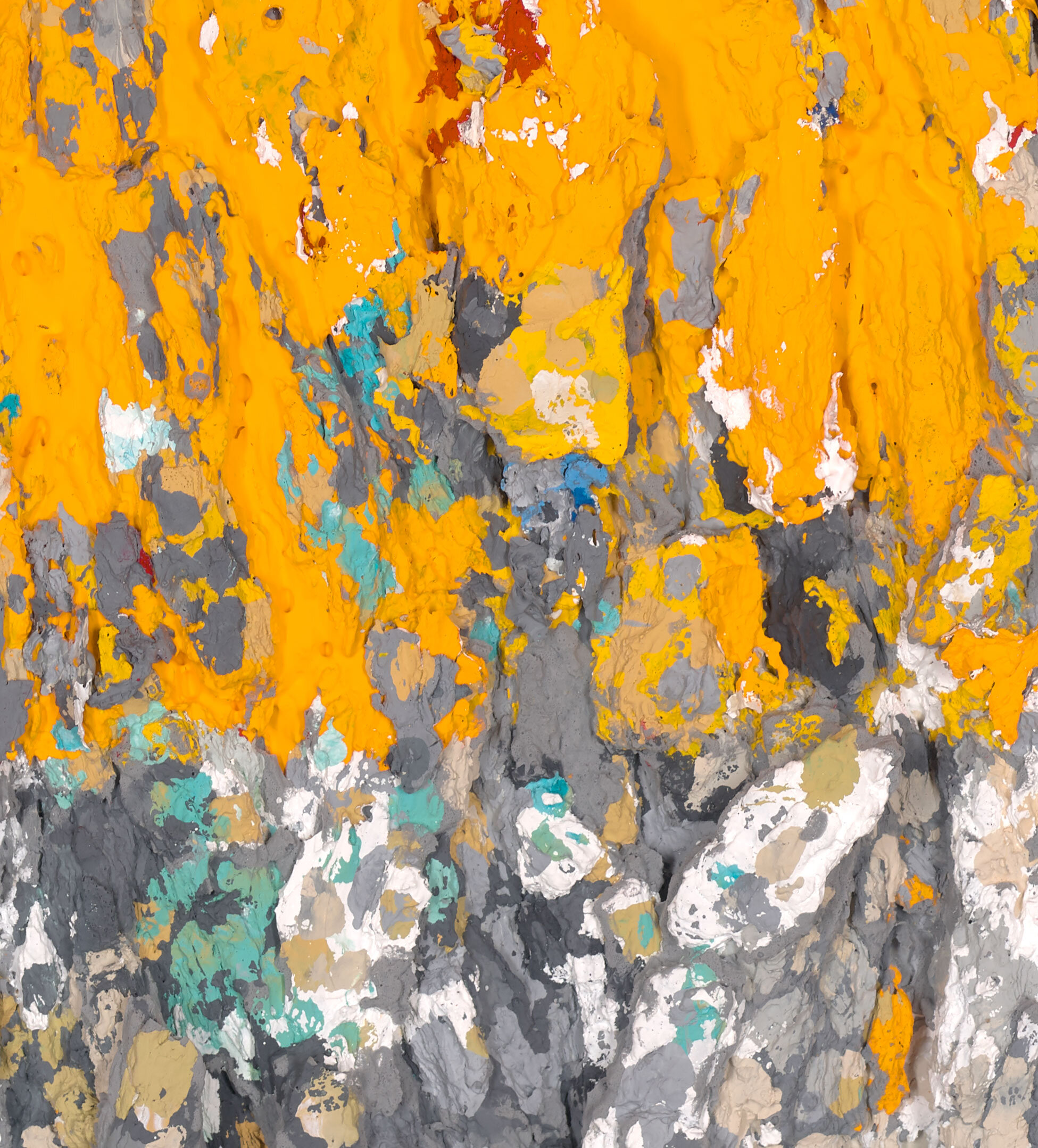
Blaze Painting / Ol' Homage Trail (detail)

Blaze Painting / Ol' Homage Trail, 2021. Acrylic paint and polyurethane foam on Rives BFK, 34 x 34 inches.

Blaze Painting / Wine Dark Trail, 2021. Acrylic paint and polyurethane foam on Rives BFK, 34 x 34 inches.

Blaze Painting / Wine Dark Trail (detail)
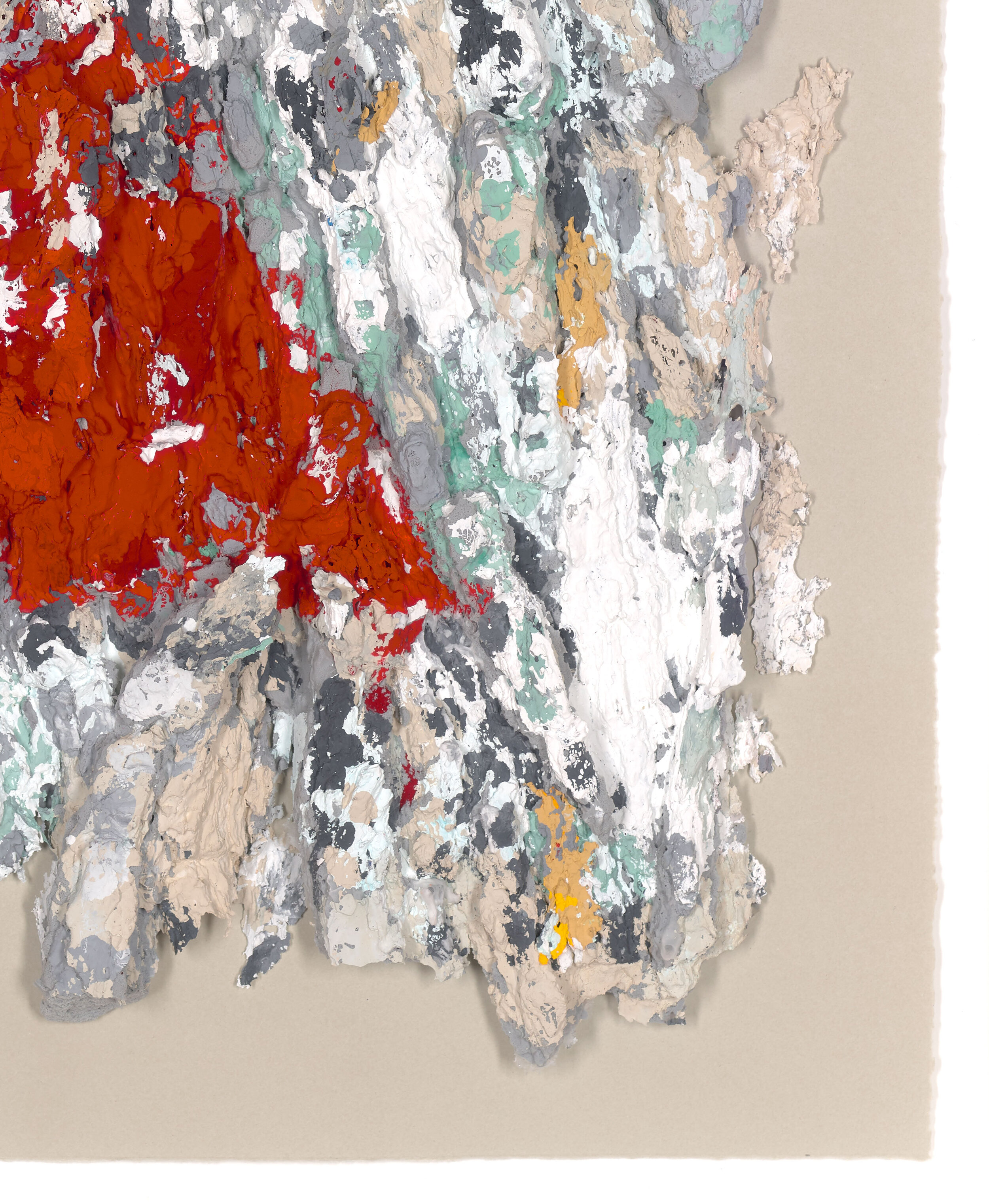
Blaze Painting / Great White's Delight. (detail)

Blaze Painting / Great White's Delight, 2021. Acrylic paint and polyurethane foam on Rives BFK, 34 x 34 inches.
ABOUT THE ARTIST
Christopher Thomas Campbell (b. 1986) is an artist and architect based in Brooklyn, NY. He received his B.A. in Architecture and Masters in Architecture from the University of North Carolina at Charlotte. Upon graduating from UNC Charlotte, Campbell taught in the Foundation Design Program in the Architecture program from which he matriculated. In 2016, he received his MFA from Washington University in St. Louis. Campbell's work has been shown in venues throughout the US, including the Mildred Lane Kemper Art Museum in St. Louis, the Contemporary Art Museum St. Louis, DXIX Projects in Los Angeles, and Gallery Twenty-Two in Charlotte, NC.


